Nicolas Skatchkovsky
Performance Evaluation of Neuromorphic Hardware for Onboard Satellite Communication Applications
Jan 12, 2024Abstract:Spiking neural networks (SNNs) implemented on neuromorphic processors (NPs) can enhance the energy efficiency of deployments of artificial intelligence (AI) for specific workloads. As such, NP represents an interesting opportunity for implementing AI tasks on board power-limited satellite communication spacecraft. In this article, we disseminate the findings of a recently completed study which targeted the comparison in terms of performance and power-consumption of different satellite communication use cases implemented on standard AI accelerators and on NPs. In particular, the article describes three prominent use cases, namely payload resource optimization, onboard interference detection and classification, and dynamic receive beamforming; and compare the performance of conventional convolutional neural networks (CNNs) implemented on Xilinx's VCK5000 Versal development card and SNNs on Intel's neuromorphic chip Loihi 2.
Energy-Efficient On-Board Radio Resource Management for Satellite Communications via Neuromorphic Computing
Aug 22, 2023


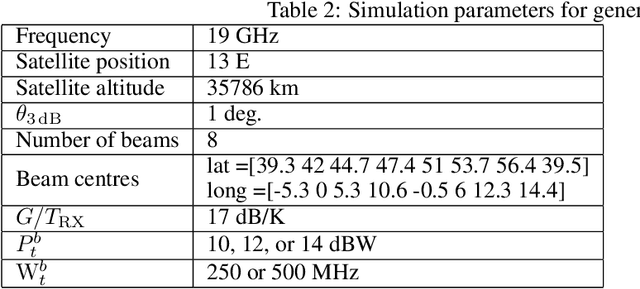
Abstract:The latest satellite communication (SatCom) missions are characterized by a fully reconfigurable on-board software-defined payload, capable of adapting radio resources to the temporal and spatial variations of the system traffic. As pure optimization-based solutions have shown to be computationally tedious and to lack flexibility, machine learning (ML)-based methods have emerged as promising alternatives. We investigate the application of energy-efficient brain-inspired ML models for on-board radio resource management. Apart from software simulation, we report extensive experimental results leveraging the recently released Intel Loihi 2 chip. To benchmark the performance of the proposed model, we implement conventional convolutional neural networks (CNN) on a Xilinx Versal VCK5000, and provide a detailed comparison of accuracy, precision, recall, and energy efficiency for different traffic demands. Most notably, for relevant workloads, spiking neural networks (SNNs) implemented on Loihi 2 yield higher accuracy, while reducing power consumption by more than 100$\times$ as compared to the CNN-based reference platform. Our findings point to the significant potential of neuromorphic computing and SNNs in supporting on-board SatCom operations, paving the way for enhanced efficiency and sustainability in future SatCom systems.
Bayesian Inference on Binary Spiking Networks Leveraging Nanoscale Device Stochasticity
Feb 02, 2023Abstract:Bayesian Neural Networks (BNNs) can overcome the problem of overconfidence that plagues traditional frequentist deep neural networks, and are hence considered to be a key enabler for reliable AI systems. However, conventional hardware realizations of BNNs are resource intensive, requiring the implementation of random number generators for synaptic sampling. Owing to their inherent stochasticity during programming and read operations, nanoscale memristive devices can be directly leveraged for sampling, without the need for additional hardware resources. In this paper, we introduce a novel Phase Change Memory (PCM)-based hardware implementation for BNNs with binary synapses. The proposed architecture consists of separate weight and noise planes, in which PCM cells are configured and operated to represent the nominal values of weights and to generate the required noise for sampling, respectively. Using experimentally observed PCM noise characteristics, for the exemplary Breast Cancer Dataset classification problem, we obtain hardware accuracy and expected calibration error matching that of an 8-bit fixed-point (FxP8) implementation, with projected savings of over 9$\times$ in terms of core area transistor count.
Neuromorphic Integrated Sensing and Communications
Sep 24, 2022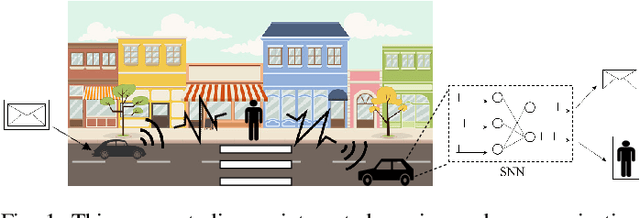

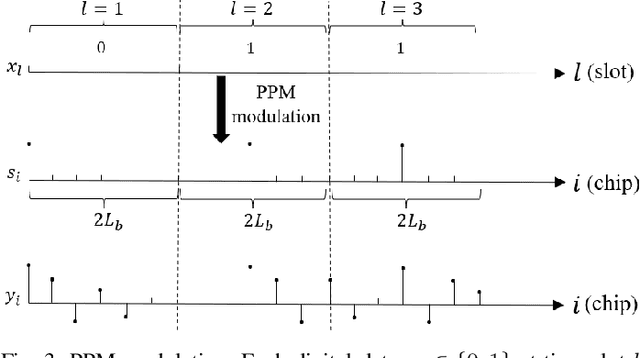
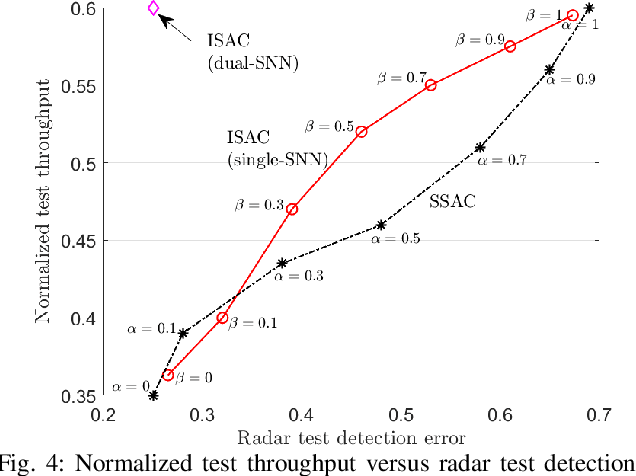
Abstract:Neuromorphic computing is an emerging technology that support event-driven data processing for applications requiring efficient online inference and/or control. Recent work has introduced the concept of neuromorphic communications, whereby neuromorphic computing is integrated with impulse radio (IR) transmission to implement low-energy and low-latency remote inference in wireless IoT networks. In this paper, we introduce neuromorphic integrated sensing and communications (N-ISAC), a novel solution that enables efficient online data decoding and radar sensing. N-ISAC leverages a common IR waveform for the dual purpose of conveying digital information and of detecting the presence or absence of a radar target. A spiking neural network (SNN) is deployed at the receiver to decode digital data and detect the radar target using directly the received signal. The SNN operation is optimized by balancing performance metric for data communications and radar sensing, highlighting synergies and trade-offs between the two applications.
Bayesian Continual Learning via Spiking Neural Networks
Aug 29, 2022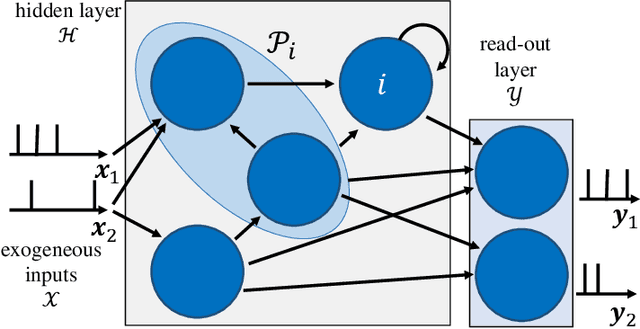


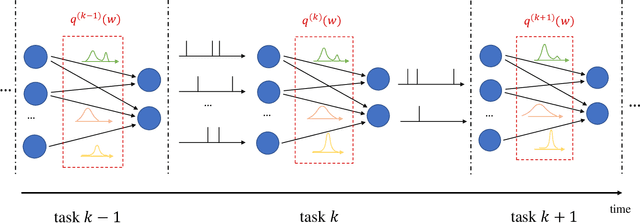
Abstract:Among the main features of biological intelligence are energy efficiency, capacity for continual adaptation, and risk management via uncertainty quantification. Neuromorphic engineering has been thus far mostly driven by the goal of implementing energy-efficient machines that take inspiration from the time-based computing paradigm of biological brains. In this paper, we take steps towards the design of neuromorphic systems that are capable of adaptation to changing learning tasks, while producing well-calibrated uncertainty quantification estimates. To this end, we derive online learning rules for spiking neural networks (SNNs) within a Bayesian continual learning framework. In it, each synaptic weight is represented by parameters that quantify the current epistemic uncertainty resulting from prior knowledge and observed data. The proposed online rules update the distribution parameters in a streaming fashion as data are observed. We instantiate the proposed approach for both real-valued and binary synaptic weights. Experimental results using Intel's Lava platform show the merits of Bayesian over frequentist learning in terms of capacity for adaptation and uncertainty quantification.
Neuromorphic Wireless Cognition: Event-Driven Semantic Communications for Remote Inference
Jun 13, 2022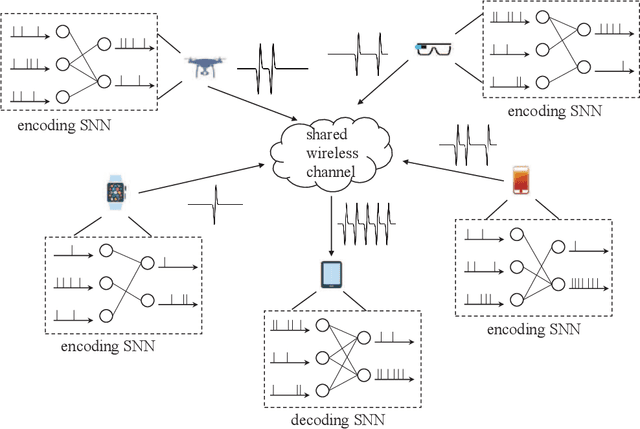

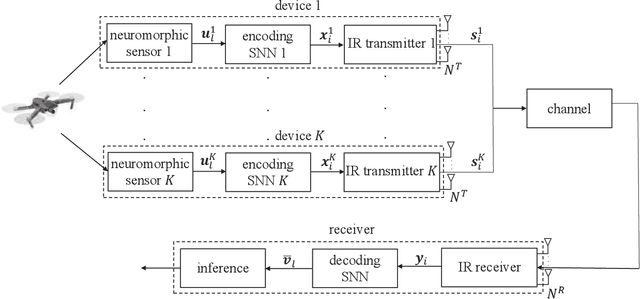
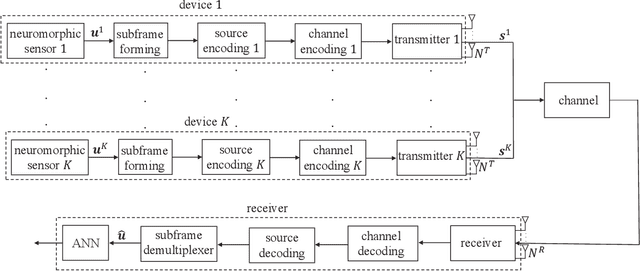
Abstract:Neuromorphic computing is an emerging computing paradigm that moves away from batched processing towards the online, event-driven, processing of streaming data. Neuromorphic chips, when coupled with spike-based sensors, can inherently adapt to the "semantics" of the data distribution by consuming energy only when relevant events are recorded in the timing of spikes and by proving a low-latency response to changing conditions in the environment. This paper proposes an end-to-end design for a neuromorphic wireless Internet-of-Things system that integrates spike-based sensing, processing, and communication. In the proposed NeuroComm system, each sensing device is equipped with a neuromorphic sensor, a spiking neural network (SNN), and an impulse radio transmitter with multiple antennas. Transmission takes place over a shared fading channel to a receiver equipped with a multi-antenna impulse radio receiver and with an SNN. In order to enable adaptation of the receiver to the fading channel conditions, we introduce a hypernetwork to control the weights of the decoding SNN using pilots. Pilots, encoding SNNs, decoding SNN, and hypernetwork are jointly trained across multiple channel realizations. The proposed system is shown to significantly improve over conventional frame-based digital solutions, as well as over alternative non-adaptive training methods, in terms of time-to-accuracy and energy consumption metrics.
Learning to Time-Decode in Spiking Neural Networks Through the Information Bottleneck
Jun 02, 2021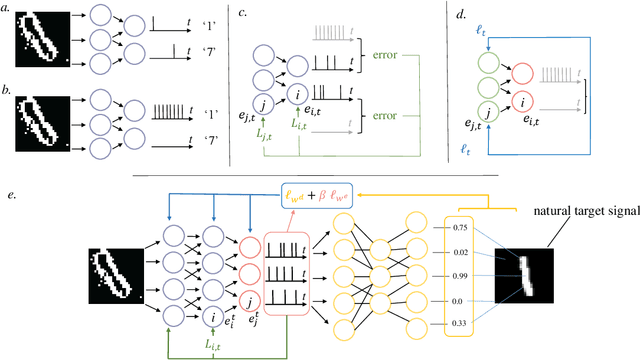

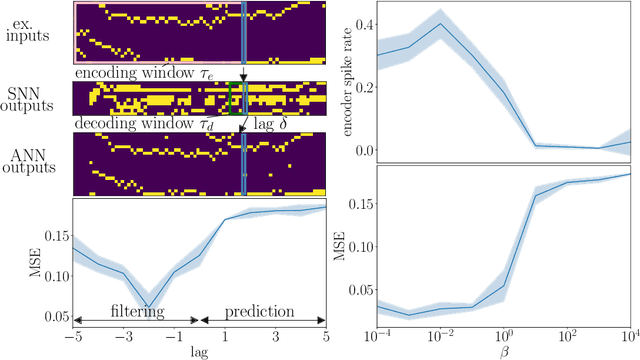
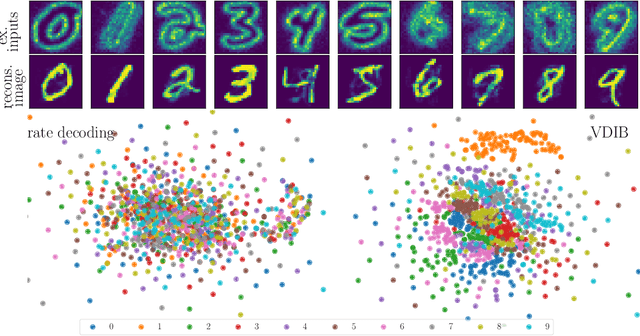
Abstract:One of the key challenges in training Spiking Neural Networks (SNNs) is that target outputs typically come in the form of natural signals, such as labels for classification or images for generative models, and need to be encoded into spikes. This is done by handcrafting target spiking signals, which in turn implicitly fixes the mechanisms used to decode spikes into natural signals, e.g., rate decoding. The arbitrary choice of target signals and decoding rule generally impairs the capacity of the SNN to encode and process information in the timing of spikes. To address this problem, this work introduces a hybrid variational autoencoder architecture, consisting of an encoding SNN and a decoding Artificial Neural Network (ANN). The role of the decoding ANN is to learn how to best convert the spiking signals output by the SNN into the target natural signal. A novel end-to-end learning rule is introduced that optimizes a directed information bottleneck training criterion via surrogate gradients. We demonstrate the applicability of the technique in an experimental settings on various tasks, including real-life datasets.
BiSNN: Training Spiking Neural Networks with Binary Weights via Bayesian Learning
Dec 15, 2020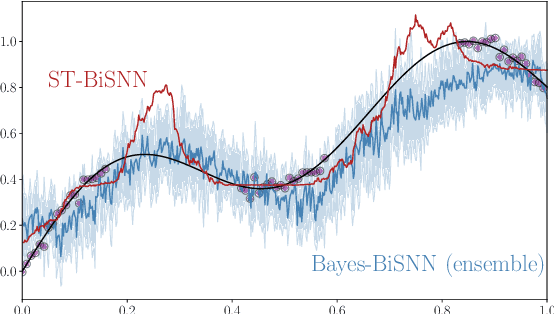

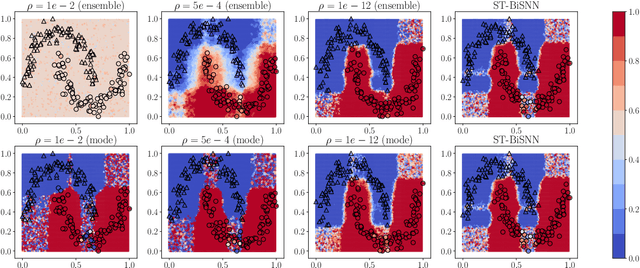

Abstract:Artificial Neural Network (ANN)-based inference on battery-powered devices can be made more energy-efficient by restricting the synaptic weights to be binary, hence eliminating the need to perform multiplications. An alternative, emerging, approach relies on the use of Spiking Neural Networks (SNNs), biologically inspired, dynamic, event-driven models that enhance energy efficiency via the use of binary, sparse, activations. In this paper, an SNN model is introduced that combines the benefits of temporally sparse binary activations and of binary weights. Two learning rules are derived, the first based on the combination of straight-through and surrogate gradient techniques, and the second based on a Bayesian paradigm. Experiments validate the performance loss with respect to full-precision implementations, and demonstrate the advantage of the Bayesian paradigm in terms of accuracy and calibration.
Spiking Neural Networks -- Part III: Neuromorphic Communications
Oct 27, 2020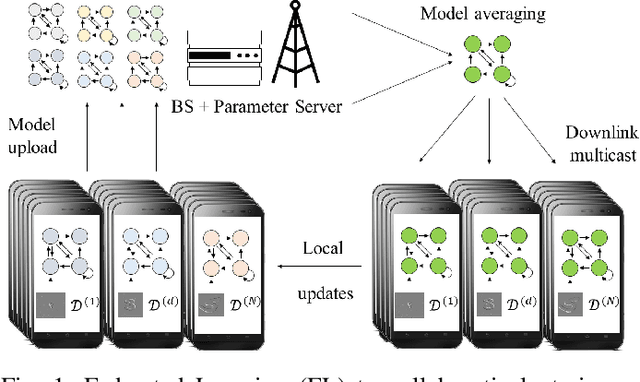
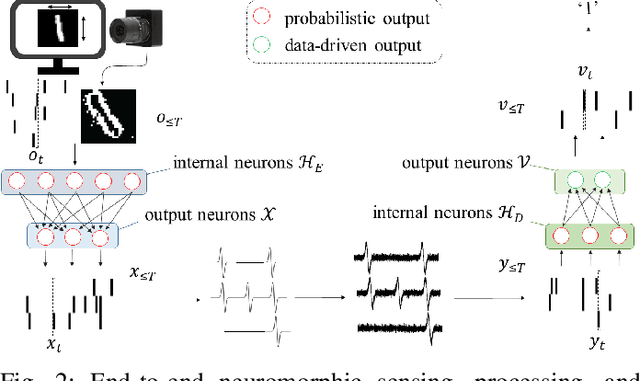
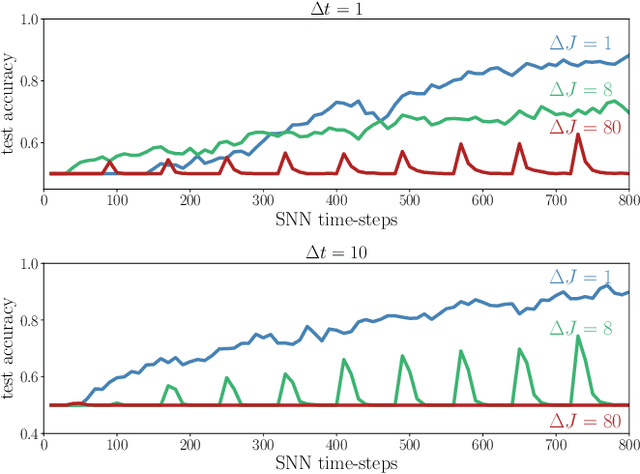
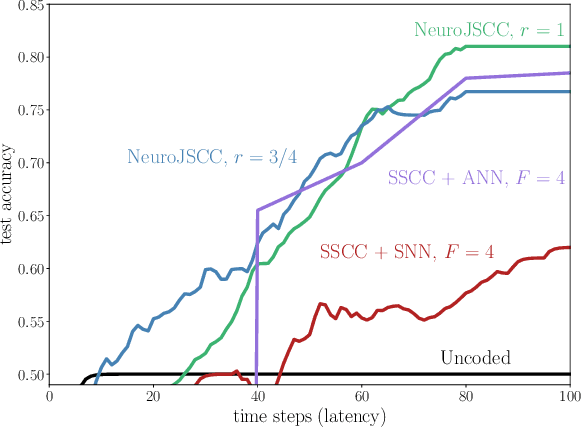
Abstract:Synergies between wireless communications and artificial intelligence are increasingly motivating research at the intersection of the two fields. On the one hand, the presence of more and more wirelessly connected devices, each with its own data, is driving efforts to export advances in machine learning (ML) from high performance computing facilities, where information is stored and processed in a single location, to distributed, privacy-minded, processing at the end user. On the other hand, ML can address algorithm and model deficits in the optimization of communication protocols. However, implementing ML models for learning and inference on battery-powered devices that are connected via bandwidth-constrained channels remains challenging. This paper explores two ways in which Spiking Neural Networks (SNNs) can help address these open problems. First, we discuss federated learning for the distributed training of SNNs, and then describe the integration of neuromorphic sensing, SNNs, and impulse radio technologies for low-power remote inference.
Spiking Neural Networks -- Part II: Detecting Spatio-Temporal Patterns
Oct 27, 2020

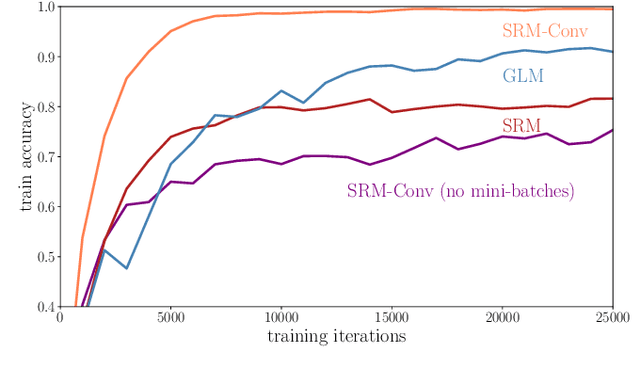
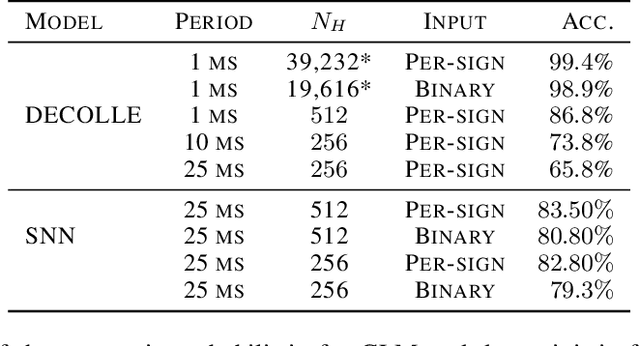
Abstract:Inspired by the operation of biological brains, Spiking Neural Networks (SNNs) have the unique ability to detect information encoded in spatio-temporal patterns of spiking signals. Examples of data types requiring spatio-temporal processing include logs of time stamps, e.g., of tweets, and outputs of neural prostheses and neuromorphic sensors. In this paper, the second of a series of three review papers on SNNs, we first review models and training algorithms for the dominant approach that considers SNNs as a Recurrent Neural Network (RNN) and adapt learning rules based on backpropagation through time to the requirements of SNNs. In order to tackle the non-differentiability of the spiking mechanism, state-of-the-art solutions use surrogate gradients that approximate the threshold activation function with a differentiable function. Then, we describe an alternative approach that relies on probabilistic models for spiking neurons, allowing the derivation of local learning rules via stochastic estimates of the gradient. Finally, experiments are provided for neuromorphic data sets, yielding insights on accuracy and convergence under different SNN models.
 Add to Chrome
Add to Chrome Add to Firefox
Add to Firefox Add to Edge
Add to Edge